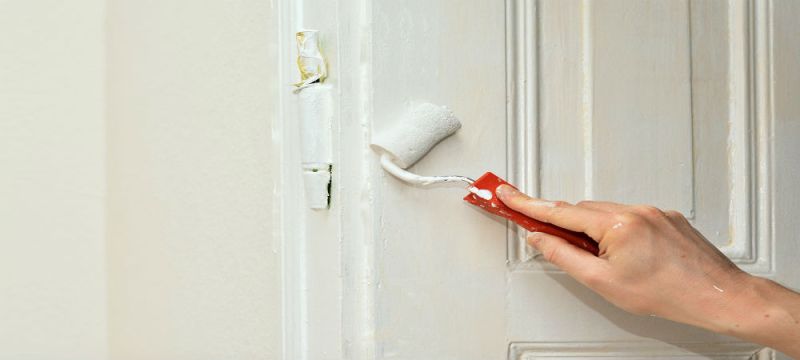The spring season often motivates homeowners to clean, reorganize and even embark on bold home projects. Whether you decide to knock down a wall to expand the size of your kitchen, or simply change up your wall paint colors, home projects are long tasks that require your full attention. One should not speed through the process; if so, you will inevitably make mistakes.
Luckily, there are plenty of tutorials and advice tips on how to successfully paint a room without creating a catastrophe. When painting a wall, you don’t want to accidentally paint the ceiling, you don’t want to create streaks and you don’t want to drip paint onto the floor. Pay careful attention to these simple, easy-to-learn instructions, and you’ll soon become a painting master.
Prep The Room

Like with any task, it’s important to get organized before you get to work painting a wall. First, you want to move all the furniture out of the room so no paint will get on anything and ruin it. If you have large furniture, you can pile the furnishings in the center of the room and cover them with cloths or sheets to protect them.
Obviously, remove any paintings, tapestries or photos you have hanging on your walls. In addition to this, remove all outlet covers. You can choose to leave them their original color or you can paint them the new color of your wall. But even if you choose to paint the covers, it’s still important to remove them so you don’t get paint splattered onto the outlet plugs.
To keep paint from getting onto your wood trims and windows, place blue 1/2-inch painter’s tape around the edges to protect them from splatter. To minimize your chances of spilling paint on your carpet or hardwood floors, cover the floors with a canvas drop cloth. Not only does this specific type of cloth cover easily, but it also doesn’t need to be taped, which allows you more tape to place around wood trims and windows.
Determine The Cost

So many homeowners ask this question at the beginning of the painting process: How much will this cost? Is it worth the time and effort? If you want to transform your room, then yes, it’s worth it. But let’s break it down for you on just how much money you can expect to spend on your upcoming painting project.
The cost to paint an average size room (10×12) ranges from $200 to $300. Paint brands vary in price, with the highest end costing between $30-$60 per gallon. Different finishes of paint, such as flat, semi-gloss and high-gloss, also vary in price.
If your wall previously had a color that will be difficult to paint, you need primer to help your new paint color stand out from the previous color. A can of primer can cost anywhere from $7-$15 per can.
Finally, painting projects need rollers and brushes, which also vary in price range according to size and brand.
Start Painting

Before you begin, use a paint stick to thoroughly mix your paint to prevent the pigments from settling. To prevent paint from dripping each time you dip your brush into the paint, pour some paint into a paint tray.
Here’s the first important step: Don’t overload your roller with paint. Instead, dip your roller halfway into your paint tray, then roll it back onto the tray’s angled platform to remove any excess paint that would immediately drip onto your floor.
Start painting at one corner of the room and apply paint vertically to the wall. To be the most effective, overlap the paint in a vertical “W” pattern with light pressure to prevent splattering. Go back over the area to even out the paint and continue painting in a vertical “W” pattern until you cover the entire wall.
If your paint looks thin or appears lighter than the color you chose, apply a second coat. This second coat helps provide a more finished look to the wall and will more accurately match the color you purchased.
After you finish painting, you may notice drips on the walls. To get these out, use alcohol wipes to soften the latex paint. To clean up any paint that may have dripped onto the trim, use a metal putty knife pointed at a downward angle after you remove your tape. Clean any residue with denatured alcohol, gently rubbing the wood until it’s restored to its original state.
Cleaning Up

To clean up your work supplies, wash your brushes, rollers and paint tray with water and soap or dishwater detergent, preferably in a space outside to avoid making a mess or staining somewhere in your home. Wrap your brushes in plastic wrap and place them in their original packaging to keep the bristles straight until your next painting project.
